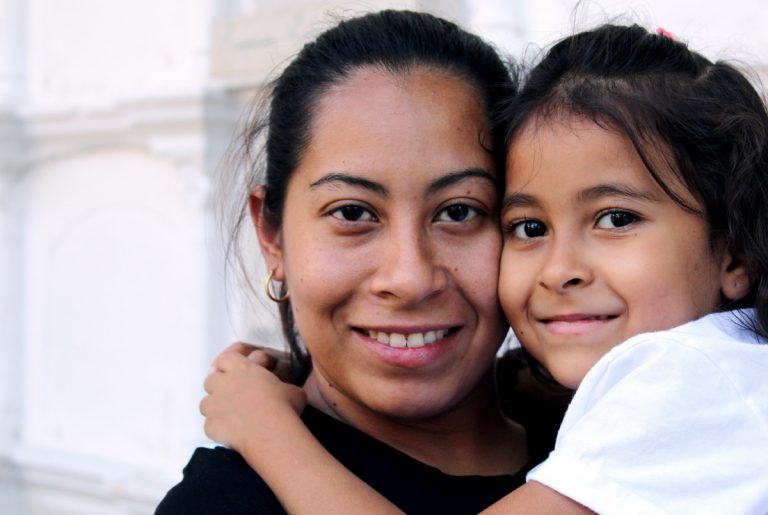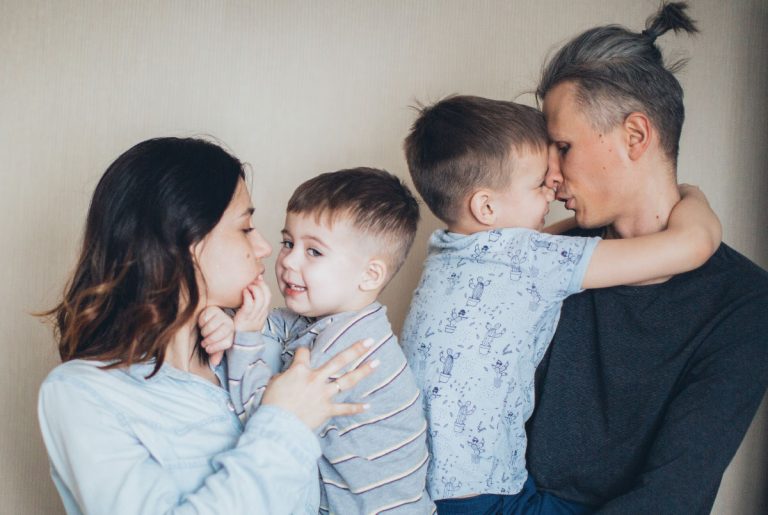The dynamic and construction of families is changing, and they’re no longer the cookie cutter, nuclear family of yesteryear. Modern families come in all sorts of shapes and sizes, and blended families are becoming more common.
While the prospect of blending families – where individuals from previous relationships come together to create a shared household – can be exciting and rewarding, it also presents unique challenges and complexities.
From navigating different parenting styles to managing conflicting emotions, the journey of harmoniously blending families requires careful consideration, patience, and understanding.
In this article, we look at the intricacies of blending families and share our advice for creating a healthy and thriving blended family unit.
What is a blended family?
Stepfamily? Blended family? New family? How you choose to define your family is entirely up to you.
But if you’re looking for a more official definition, the Australian Bureau of Statistics defines a blended family as a couple with “two or more children, of whom at least one is the natural or adopted child of both members of the couple, and at least one is the step child of either partner in the couple.”
Despite this formal definition, there’s no real template for what a blended family looks like. All blended families will be constructed differently and will be dealing with different situations:
- Just one, or perhaps both, partners may have previous children from past relationships.
- The blended family’s children could be very far apart or close in age.
- There might be different custodial agreements, with children splitting their time with each parent differently. This might mean the number of people in the family could change, depending on the day, week or month.
What are some common issues blended families face?
Bringing two families together can be challenging, and it’s likely there will be some growing pains or adjustments to make as you find a way forward as a new family unit.
All families face challenges, regardless of being blended or not. But there are some unique and specific challenges that can arise in blended families.
Rivalry
It’s completely normal for new or bonus siblings to experience some kind of rivalry. It’s also not uncommon for children to experience rivalry with a new partner, seeing them as taking up their parent’s time or as the root of change or upheaval. Some partners might even feel a little jealous at having to share time with new children.
Rivalry could be an emotional tug of war for someone’s attention and time. Family members might look to make sure that everything is fair and equal – finding the smallest inequalities – and become distressed about perceived or real differences in treatment.
Clashing values
Each newly blended family will come with their own set of values, and these don’t always neatly align. What you perceive to be important or right might not match up with your partner’s views, or their children’s. This can cause tension and upheaval, and will mean that joint expectations, discipline, rules and boundaries will need to be discussed and negotiated.
The ‘other’ family
It’s not just your bonus family you need to navigate. If your partner comes to the relationship with children from a previous relationship, you may also need to manage a relationship with their original family, including ex-partners.
Even if there’s no animosity, you might experience challenges with the former partner’s parenting style, and how this influences the behaviour of your step or bonus child, and the rest of your family. You’ll also need to consider other people’s schedules and requirements when it comes to the practical day-to-day planning it takes to run a household, like visitations, custodial arrangements, birthdays and holidays.
Big feelings
You might be excited about blending your new family, but not every member is going to feel the same way. Chances are, there are going to be some big emotions associated with the adjustment.
Children might grieve the loss of their original family; they might be angry at having to share you; or resentful of your new role in the blended family. They could feel insecure about their new place in the unit and how they fit in, or even worried about the change.
Some tips to help parents blend their families
Research suggests it can take between one and two years for blended families to fully adjust to the changes associated with becoming a new family. This may seem like a long time, but since these are often brand-new, fledgling relationships that need to be supported and nourished, they can’t be rushed.
Parents who take a proactive approach and openly and transparently navigate challenges can help smooth this period of adjustment.
Getting to know one another
Commit as much time as you can with each individual family member, to give everyone a chance to communicate and get to know one another.
Your children are bound to worry that being part of a blended family could mean they get less time with you, so make sure they know they still have your time, love and attention. Before and after your families merge, keep spending quality time with just them and find ways for them to still feel included in your life.
You could try using a pack of cards with conversational prompts to learn more about each other and play around the dinner table. Depending on the children’s ages, the questions could be simple, getting to know you topics – like your favourite colours or food – or they could delve a little deeper – like your earliest memories or ways you show and receive love.
Defining parenting roles
It’s important to spend some time exploring your beliefs and attitudes towards discipline, rewards and consequences, and establishing roles and responsibilities. Will you do the bulk of the cooking, and your partner will do the school run? Are you the disciplinarian for your partner’s children, or just your own?
When you’re making big parenting decisions, it can be helpful for you and your partner to discuss things away from the children before you reach a decision. When you’re ready communicate what you’ve discussed, you should each take responsibility for letting your own children know and be there to answer any questions or concerns they might have. Make it clear that you and their stepparent reached this decision together, because you both believe it’s for the best.
It can be beneficial in the long run to allow the new parent to step away from being the disciplinarian to their step or bonus children, whenever possible, so they can focus on nurturing this new relationship and establishing trust instead.
It’s important to tackle these potentially awkward topics together so you can present a united and consistent front to the children. Clear expectations will help kids feel more secure and pre-empts the chance of them playing you and your partner against one another.
Teamwork makes the dream work
Figure out each family member’s skills and interests and use this to help shape your expectations and roles. If your child loves helping in the kitchen, perhaps they can be the one to help make meals or tidy away. Your partner’s child might love being outdoors, so they could be responsible for walking the dog.
Assigning family members roles or ‘jobs’ – something they are responsible for – can help create a sense of belonging and connectedness, and even boost self-esteem. It’s also a chance to make sure everyone is contributing fairly, working as a team and considering the needs of the family, as well as their own.
Open communication
It’s important to have opportunities for open and transparent conversations. This means being a safe and reliable person for your child, partner and bonus child to approach if they need to talk. Build their trust so they know that you’ll hear, understand, support and continue to care for them, even if it’s a tricky topic.
Bring all your non-verbal listening skills to the fore to be a good listener and encourage your family to share how they’re feeling. Make eye contact, have an open body posture (avoiding crossed arms), nod and use other gestures like smiling to encourage them to keep talking.
Share their interests
Getting involved with their interests shows you’re paying attention to what they like and dislike and demonstrates that you care. Ask them to share their favourite song with you and play it in the car when you next drive together, learn about their hobbies or get them to teach you something new or show you how they do it.
Benefits of a blended family
Being part of a blended family can be challenging at times, but there can be so many wonderful elements, too.
- Being in a blended family gives us a chance to learn new perspectives and build tolerance, resilience and empathy.
- Learning how to manage complex relationships or negotiate and share are skills that can help us and our children in many other areas of our lives.
- Having a blended family can also bring added support networks, like new grandparents, aunties and uncles. There might be new stories to learn, other cultures to explore and more shoulders to cry on or lean on in times of need.
As you and your blended unit adjust to the new norm, it’s important to be kind to yourself and your new family members.
It can take time and effort to make a blended family work. You might have squabbles and disagreements as you figure out your new roles, but if you are patient, transparent and empathetic, these mistakes and growing pains will slowly settle, and your blended family will become more like a solid and cohesive unit.
Looking for further support?
It’s not easy to blend two families together, and family counselling could be worth considering if you feel like you need some extra support. Family counselling is designed to include all family members to help improve communication, build trust and create strong, connected relationships.
We offer family counselling at Relationships Australia NSW, providing a safe space for all family members, allowing them to hear each other’s needs and unique perspectives, improve communication and address problems that are impacting the quality of their relationships.
Family counselling is available for family members of all ages and all types of family units – blended, extended, step – and it can include extended family and other caregivers.
Related Services & Workshops

Group Workshops.Families.Parenting
Parenting After Separation
Managing a difficult relationship with a former partner can be difficult, especially when kids are involved. This group offers tools to improve communication, reduce conflict and make decisions in the best interests of your kids.

Counselling.Families.Life Transition
Family Counselling
Our trained and compassionate family therapists provide Family Counselling services online and in-person throughout NSW. Family Counselling provides a safe space to address problems, hear each other’s perspectives, overcome difficulties, improve communication, and restore and strengthen relationships.

Counselling.Families.Mental Health
Adolescent Family Counselling
The teenage years can feel like an emotional minefield – and knowing how to support an adolescent can seem equally as daunting. Adolescent Family Counselling aims to restore and repair relationships by providing strategies to support teens and their families through significant life changes.






